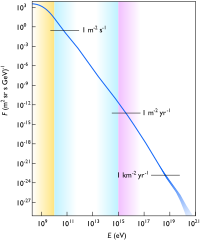
Photo from wikipedia
Abstract The gamma radiation shielding capability (GRSC) of two clay-materials (Ball clay and Kaolin)of Southwestern Nigeria (7.49°N, 4.55°E) have been investigated by determine theoretically and experimentally the mass attenuation coefficient,… Click to show full abstract
Abstract The gamma radiation shielding capability (GRSC) of two clay-materials (Ball clay and Kaolin)of Southwestern Nigeria (7.49°N, 4.55°E) have been investigated by determine theoretically and experimentally the mass attenuation coefficient, μ/ρ (cm2g−1) of the clay materials at photon energies of 609.31, 1120.29, 1173.20, 1238.11, 1332.50 and 1764.49 keV emitted from 214Bi ore and 60Co point source. The mass attenuation coefficients were theoretically evaluated using the elemental compositions of the clay-materials obtained by Particle-Induced X-ray Emission (PIXE) elemental analysis technique as input data for WinXCom software. While gamma ray transmission experiment using Hyper Pure Germanium (HPGe) spectrometer detector to experimentally determine the mass attenuation coefficients, μ/ρ (cm2g−1) of the samples. The experimental results are in good agreement with the theoretical calculations of WinXCom software. Linear attenuation coefficient (μ), half value layer (HVL) and mean free path (MFP) were also evaluated using the obtained μ/ρ values for the investigated samples. The GRSC of the selected clay-materials have been compared with other studied shielding materials. The cognizance of various factors such as availability, thermo-chemical stability and water retaining ability by the clay-samples can be analyzed for efficacy of the material for their GRSC.
Journal Title: Nuclear Engineering and Technology
Year Published: 2018
Link to full text (if available)
Share on Social Media: Sign Up to like & get
recommendations!